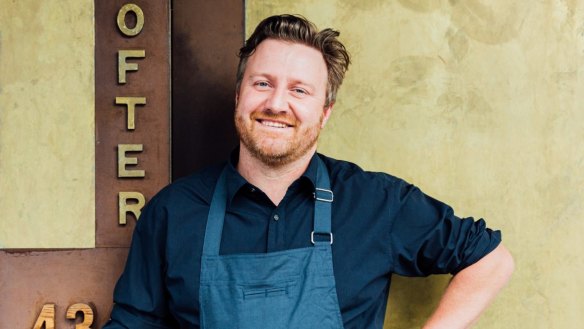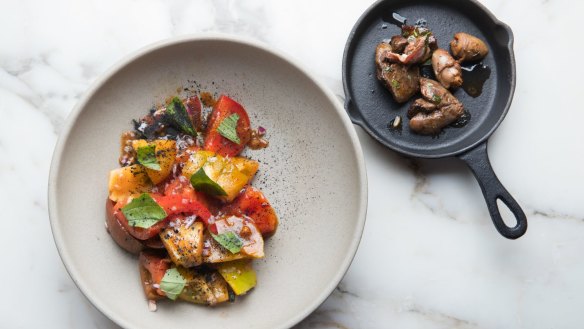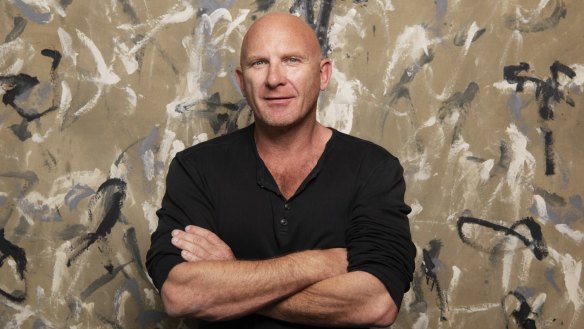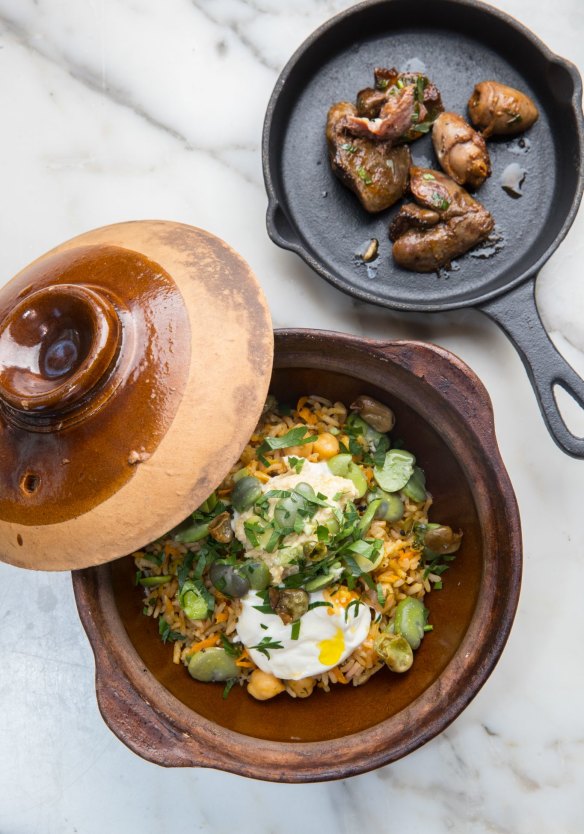The rise of the climate diet: It's veg with meat on the side

Eating with climate change in mind is shaping up to be the big food trend of 2020 and Australia's top chefs are jumping on board.
In Melbourne, at chef Matt Wilkinson's new Crofter restaurant, the meat dishes are sides and "flora" (vegetables, salads and grain dishes) are front and centre on the menu. Meanwhile in Sydney, celebrity chef Matt Moran's Chiswick at the Gallery is charging $57 for a whole roasted cauliflower covered in harissa paste and served with zucchini and pomegranate.
"There's definitely more plant-based food coming to our menus," says Matt Moran. "It's what people want. People are more conscious of what they're eating."

Moran farms livestock and is a committed meat eater but even he has a flexitarian approach.
"I have a couple of nights a week that I try to eat vegetarian," he says. "I actually roasted a whole cauliflower at home last night."
At Crofter, diners are encouraged to think about vegetables first, then add proteins if they want. "I was adamant that vegetables were the highlight of the menu and that the sides became the meat," says Wilkinson.

The chef cuts baby cucumbers to order and drizzles tomatoes with a funky Vegemite dressing.
"It's about a respect for how vegetables are grown, sourced and cooked so they can be just as much a hero as beef, chicken or pork," he says.
The meat Wilkinson does use is carefully sourced, including "old cow" that would otherwise be turned into bulk meat, offal, and by-catch seafood such as cuttlefish.

Plant-based dining ties into a key global trend for 2020 noted by digital agency Wunderman Thompson in its new Future 100 report.
"Consumers are pivoting towards a 'climate diet', consuming less meat and dairy and seeking environmentally friendly alternatives," it reads.
Tastewise, an Israeli start-up which uses artificial intelligence to forecast food trends, notes in its January 2020 report that 23 per cent more US consumers prioritise sustainable food choices than they did a year ago. It finds health is the primary driver for making food choices that happen to be more sustainable, however, such as eating more vegetables and less (or no) animal products. Being vegan and being a climate activist aren't necessarily the same thing.
"Eating mostly plant-based is a good start - red meat and dairy are the products with the most significant climate change impact," says Michalis Hadjikakou, lecturer in environmental science and management at Deakin University. "But minimising waste and excess consumption are also important."
Popular vegan foods - such as almonds and soy, depending on their source - can also have impacts in terms of deforestation, high water usage and food miles.
Entrepreneurs are flocking into the plant-based space, including Michael Fox, owner of Fable, a vegan food company which launched in Australia in December and is hanging its hopes on mushroom-based mock meat.
"Consumers want to eat products that have a smaller impact on the climate and eating a plant-based diet is the best way to reduce carbon emissions," he says.
Shiitake mushrooms are the main ingredient in Fable's mushroom product which, when cooked, aims to replicate pulled pork or braised beef. Fox says he will have the product in more than 50 restaurants around the country by the end of February.
Matt Moran isn't rushing to faux meat, however. "I don't see the point of it," he says. "Just make a mushroom and beetroot burger. It'll bleed [juice] too."
Matt Wilkinson is also cautious. "I'd rather champion a piece of roasted broccoli or an amazing carrot - there's no need for faux anything. I think people value vegetables in their own right now."
How to 'Climate Diet'
- Eat less meat, but better meat. Turn meat into a treat and make vegetables the focus of most meals.
- Eat in season. Reduce food miles by eating local food that's fresh.
- Don't waste food. Buy what you'll eat and eat what you buy.
- Eat less, generally. Most people consume too much food - there's an environmental benefit in eating as much as we need and no more.
- Ask questions. Where did this food come from, how did it get here, and do I feel OK about the supply chain and the environmental impacts?
Restaurant reviews, news and the hottest openings served to your inbox.
Sign up